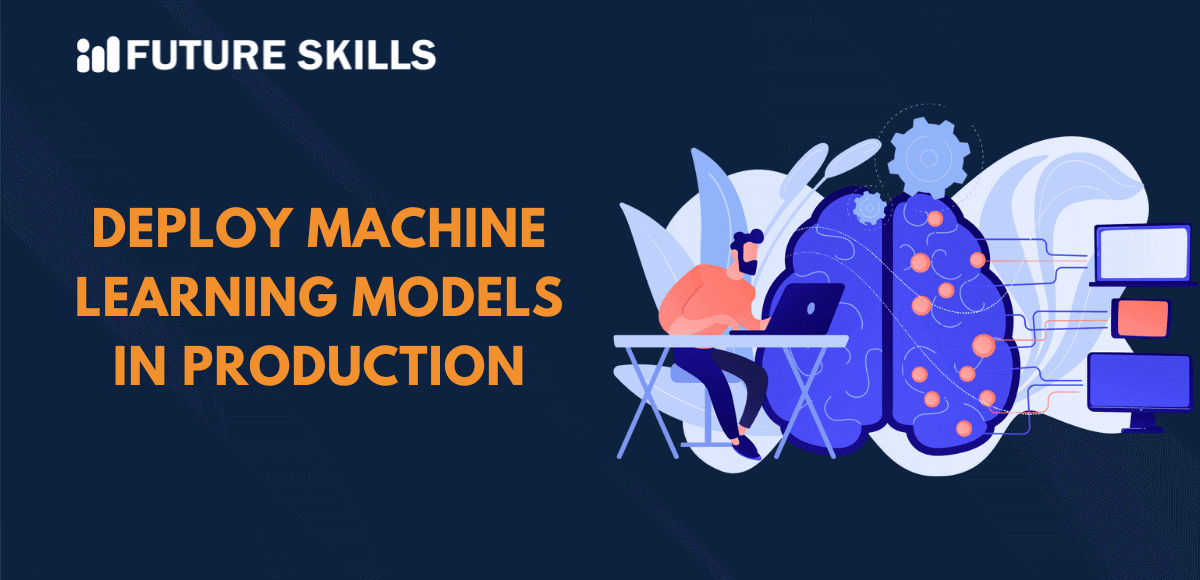Machine learning serves as an effective tool to support automation, decision-making, and automation. Once you deploy machine learning models in production, you can rely on them for uncovering unique insights and patterns. ML models can analyze massive amounts of data to draw predictions that can encourage innovation and efficiency for an organization. The effectiveness of machine learning models is visible only when you deploy them in production environments.
Deployment is a crucial requirement to test how machine learning models can affect business processes in the real world. It is important to note that most of the machine learning models don’t have the luxury of reaching the production stage. ML models can effectively serve the desired purpose only when they deal with real data, thereby validating the significance of deployment. Let us discover the best practices for deploying ML models in production.
Get ready to harness the full potential of AI with our leading Certified AI Professional (CAIP)™ Program.
Understanding the Significance of Deploying ML Models
The first thing that might come to your mind when you think of deploying ML models is the importance of deployment. Machine learning models are developed with the objective of addressing a specific problem. However, most of the models perform effectively in the development stage and end up with formidable issues in the production stage. Deploying ML models in production can help in finding out the potential issues such as prediction inaccuracies, data skews, and scalability problems.
Most of the responses to queries like ‘how to deploy machine learning models’ draw attention towards the process of deployment. It involves the transition of a machine learning model from an offline environment to an existing production environment. Deployment helps the model achieve its desired objective and tackle challenges by continuously learning new data. Deployment also facilitates interaction between the model and other components such as user interfaces and databases to extract real-time insights and automate the decision-making processes.
The deployment process for machine learning models would differ according to the type of system environment and model type. For instance, machine learning algorithms for manufacturing may require special attention to the DevOps practices followed in specific organizations. The best fit for ML model deployment would depend on different aspects such as budget constraints, scalability requirements, and data privacy regulations.
Discovering the Essential Steps in ML Model Deployment Process
The steps to deploy machine learning models provide direction for your efforts in the domain of machine learning and AI. You can rely on frameworks such as Python, Django, Streamlit and Flask to deploy ML models in production environments. Flask helps you develop RESTful APIs, Streamlit helps in developing interactive interfaces and Django supports the development of scalable web applications. Let us find out the important steps involved in deploying a sentiment analysis ML model with the help of FastAPI in Python.
-
Data Preprocessing
Data preprocessing is an integral addition to the ML model deployment workflow. You can use machine learning model in production by managing missing values with the help of techniques such as mean imputation or regression imputation. The next step in data preprocessing involves feature scaling through normalization or standardization. Feature scaling ensures that all the features in the ML model have a similar scale.
The feature scaling process in data preprocessing involves encoding the categorical variables with the help of methods like label encoding and one-hot encoding. The example of a sentiment analysis model would follow data preprocessing for the text data. You must also remove unwanted characters, implement tokenization, and use techniques such as lemmatization or stemming for data preprocessing.
-
Optimization and Training of ML Model
The next step in deploying ML models to production focuses on model optimization and training. The effectiveness of monitoring machine learning models in production would depend on selection of suitable ML models. Sentiment analysis models can choose the Random Forest Classifier algorithm for the best results. It is also important to classify the training and test datasets with the help of ‘train_test_split’ by scikit-learn.
You can use the training data and techniques such as grid or random search for faster model training. You can optimize the model through hyperparameter tuning, especially with increased focus on the number of trees in Random Forest. The sentiment analysis model would require algorithms like Support Vector Machine or Naïve Bayes for training. Cross-validation can serve as the most useful technique for optimization of hyperparameters.
-
Serialization of the Model
Observation of the performance of the trained ML model helps you pursue the next step in deploying ML models. You can deploy machine learning models in production only after serialization of the model and saving it for future applications. Serialization helps in converting your machine learning model to a binary format that you can store on disk.
Python offers a promising solution for model serialization in the ‘joblib’ library. The dump function can help you save the SVM Classifier model. You have to provide the file path where you want to save the model and the model object in the dump function. For instance, the dump function would look like the following,
joblib.dump (model, ‘model.pkl’)
-
Preparation of the Deployment Environment
The successful serialization of your ML model indicates that you need a comprehensive deployment environment. You can know how to deploy machine learning models with a deployment environment to support the deployment process. The first requirement for preparing your deployment environment is the installation of essential libraries, such as FastAPI, for creating a web API.
The deployment environment setup process involves creation of a virtual environment for managing dependencies and installing important packages with pip. It helps you create an isolated deployment environment with the essential packages alongside ensuring that it does not contradict other Python projects.
-
Creation of the Deployment API
Another interesting requirement of the ML model deployment process is the deployment API. The sentiment analysis ML model would also need a deployment API for effective deployment in the production environment. You can use a machine learning model in production for the sentiment analysis model by creating a Python script for defining the API endpoint. The script would manage incoming requests and address data preprocessing requirements.
The script is also an essential resource for making predictions with the help of trained SVM Classifier algorithms. Subsequently, you would have to use ‘joblib.load’ for loading the serialized model to memory. It is also important to ensure preprocessing of the incoming data to ensure that they match with the input requirements of the model. You would utilize the loaded model for generating predictions and returning the relevant outcomes.
Find out the best machine learning tools and how you can use them for specific tasks. These tools will help you build your credibility as a machine learning professional.
-
Deployment Testing and Validation
The next crucial step in ML model deployment focuses on testing the effectiveness of the deployment. Deployment testing is important for monitoring machine learning models in production as it helps in checking whether the deployment works correctly. You must test and validate the machine learning model deployment in the production environment with special attention to every detail.
The testing process relies on sending sample requests to the API by using curl or requests and verification of the output. You can verify the output by comparing with expected results during the model monitoring stage. Developers must also compare the model predictions in deployment stage and development stage to achieve accuracy and consistency throughout different models.
-
Machine Learning Model Deployment
You would ultimately arrive at the final stage of the deployment process after comprehensive testing and validation of the deployment. The deployment process requires selection of a server or cloud platform for deploying the FastAPI application. Some of the promising alternatives to deploy machine learning algorithms for manufacturing or other use cases include AWS, Azure Machine Learning, or Heroku.
Developers must also ensure configuration of the server or cloud environment for managing incoming requests. It is also important to redirect the incoming requests to the API endpoint defined in the testing and validation stage. The most crucial requirement for deploying ML models in the production environment is compliance with best practices for security, availability, and scalability.
Monitoring and Maintaining the ML Model Deployment
Continuous monitoring and maintenance of the performance of a ML model is a mandatory requirement after deploying it into production. The best practices for monitoring machine learning models in production include the use of logging and monitoring mechanisms for tracking API usage and performance metrics. Monitoring helps in identification of potential errors in the new or existing ML models. Regular monitoring of the models helps in finding possibilities for retraining them.
Continuous monitoring and maintenance also helps in identifying the requirements for updating the deployment. You may discover possibilities for API enhancements to manage the increasing traffic and introducing new versions of the model.
Understand the requirements for developing responsible AI and the implications of security in AI with our Ethics of Artificial Intelligence (AI) Course.
Final Thoughts
The simple example of ML model deployment process described here provides an effective solution for developers. You have more things to learn before you deploy machine learning models in production environments. For instance, you must familiarize with the system architecture for ML model deployment, best practices for ML model deployment and different deployment methods.
The review of the process for deploying ML models in production showcases the significance of each step. Beginning from the data preprocessing stage, ML developers and researchers must pay attention to every step of the deployment process. Compliance with best practices of each stage of the deployment process can help you achieve the best results. Expand your understanding of machine learning model deployment workflow with comprehensive training resources right away.







